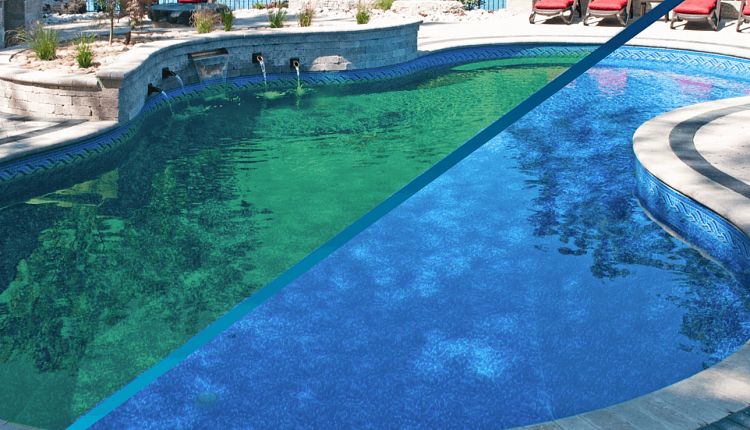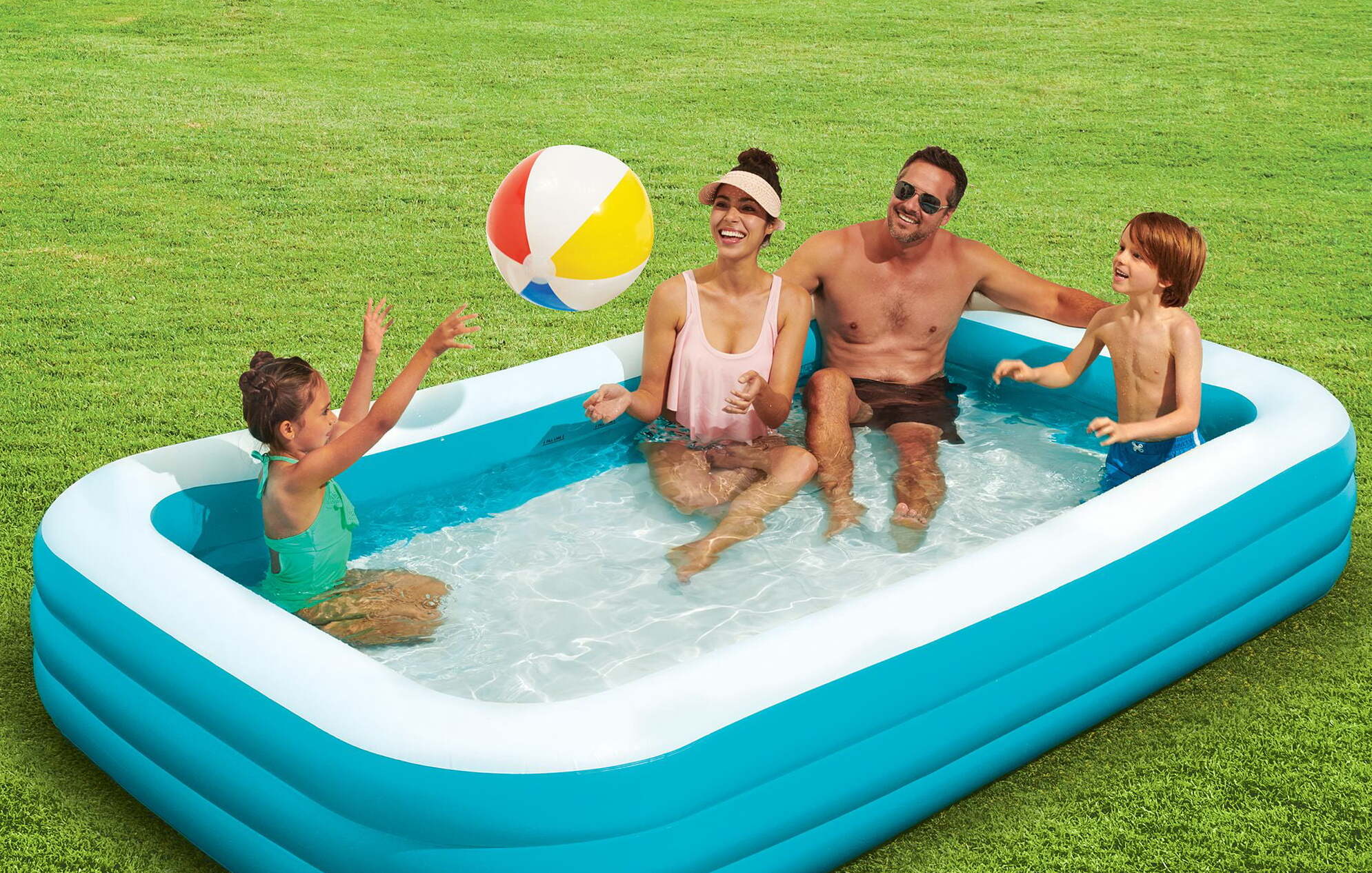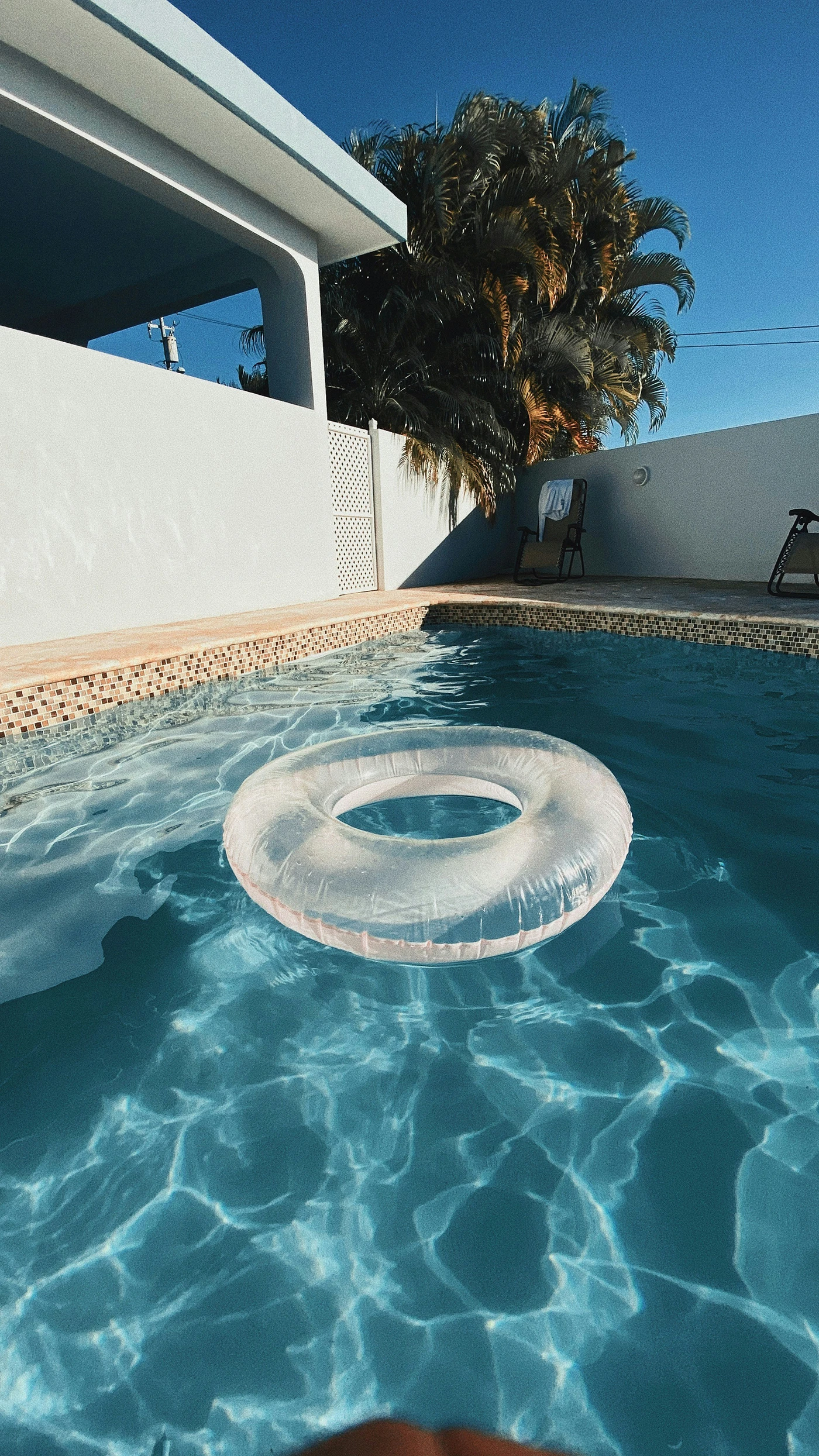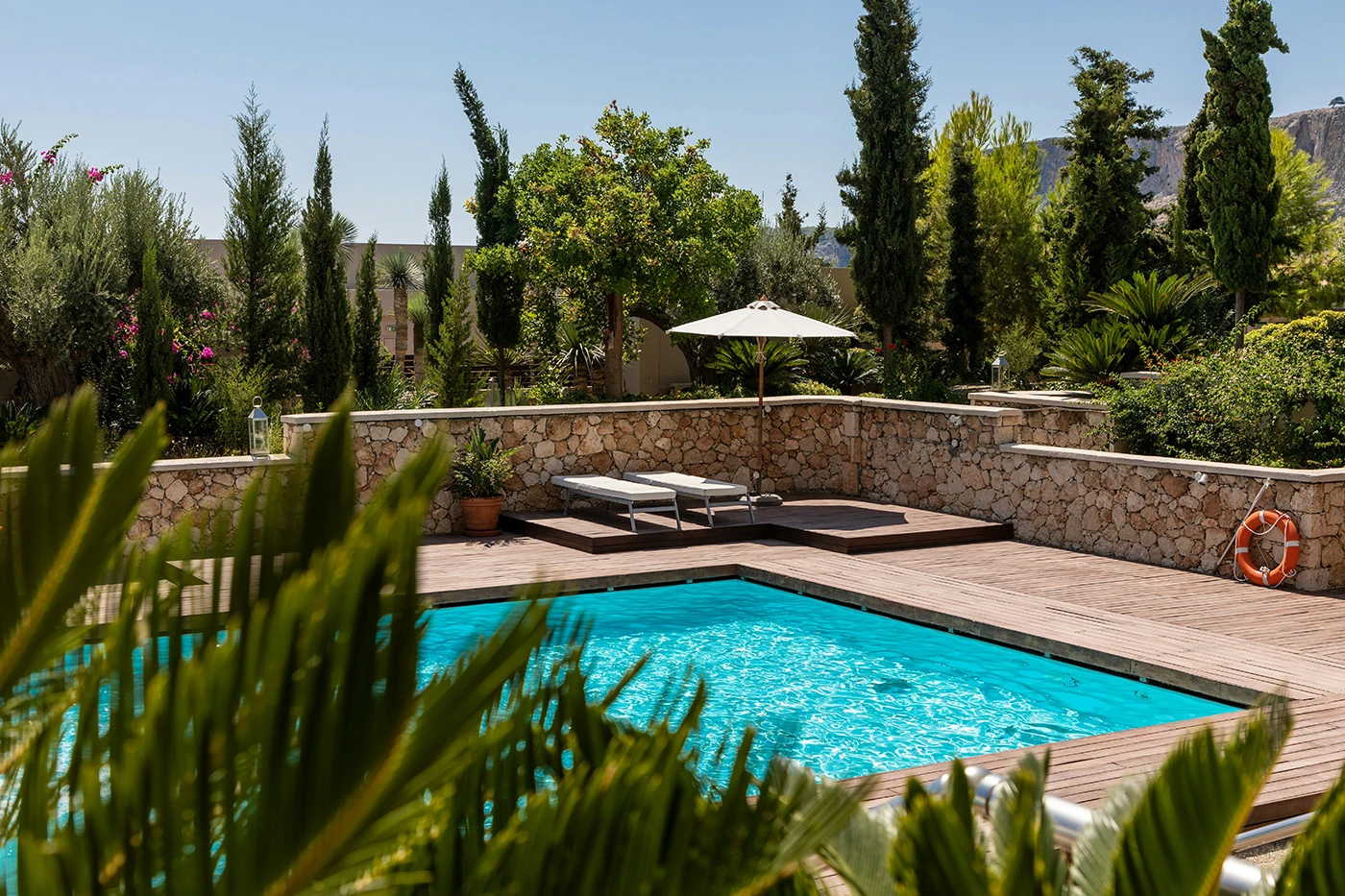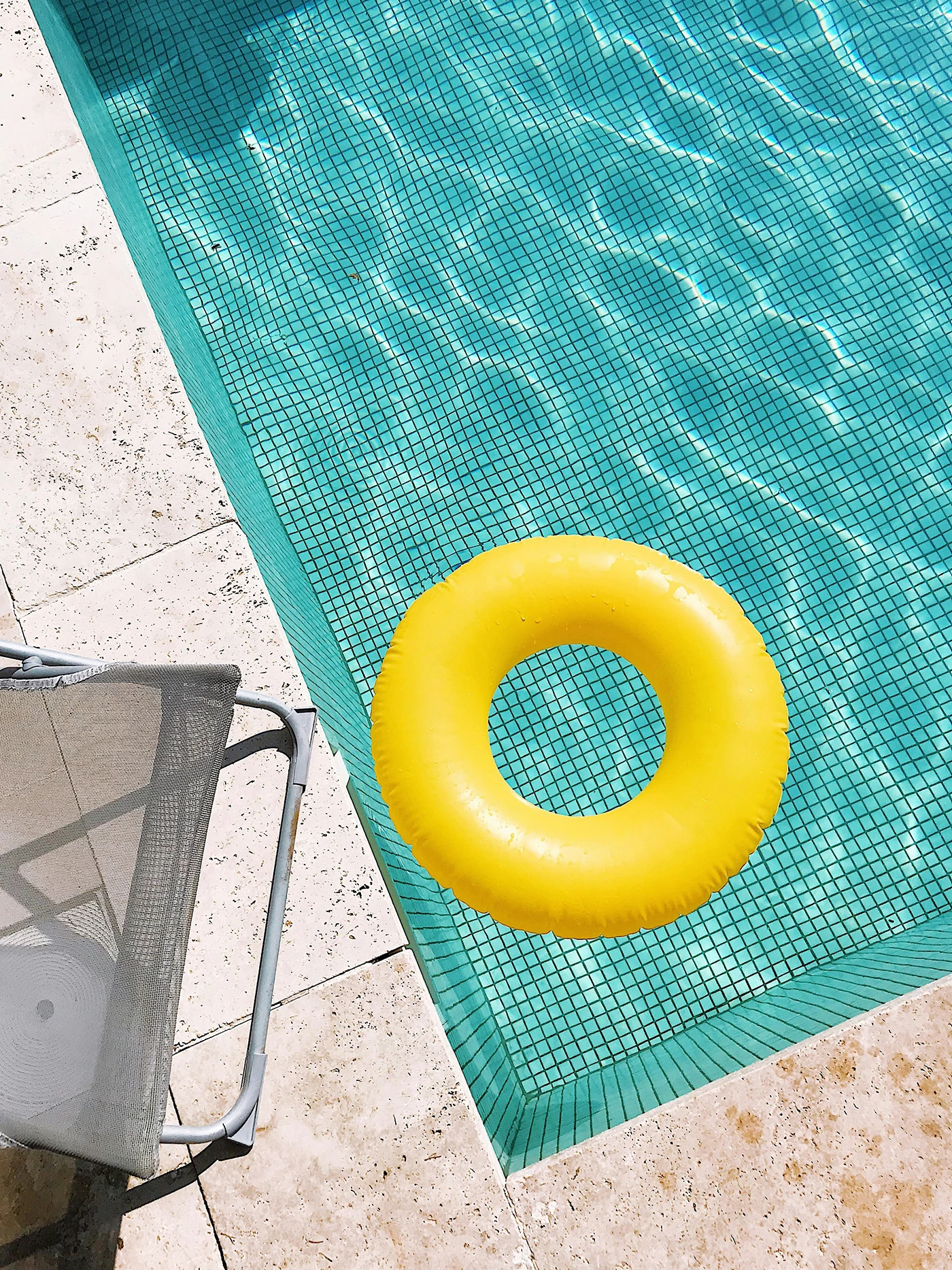Struggling with algae in your pool? This guide on how to get rid of algae in pool offers quick, effective solutions. Learn how to identify the type of algae, remove it, and prevent future outbreaks. Dive in to restore your pool’s clarity and cleanliness.
Key Takeaways
- Identifying the type of algae in your pool—green, black, yellow, or pink—is crucial as it dictates the specific treatment strategy for effective removal.
- Maintaining proper chemical levels, ensuring adequate filtration, and preventing stagnant water through good circulation are key to preventing algae growth in pools.
- Effective algae removal involves a combination of manual cleaning, brushing, pool shocking, algaecide application, and regular maintenance to keep your pool clear and algae-free.
Identifying Pool Algae

Before you can wage war against pool algae, you must know your enemy. These single-celled plants come in various forms, each with unique characteristics that demand specific strategies for removal. Whether it’s the common green slime that clings to your pool walls or the stubborn black spots that seem almost invincible, recognizing the type of algae is the first step in reclaiming your swimming sanctuary.
Green Algae
The most familiar foe is green algae, the hallmark sign of a neglected pool. This unwelcome guest ranges from a light teal to a dark, murky green, swiftly transforming a clean pool into a green pool disaster. It’s not picky about where it settles; you’ll find it free-floating or clinging persistently to your pool surfaces, waiting for the perfect moment to stage a full-blown algae bloom. The presence of green water is a clear indication that your pool needs immediate attention.
Black Algae

Next on the list is the bane of many pool owners, black algae. This tenacious variety embeds itself into your pool floor and walls, particularly in plaster finishes where it can root deeply. Its protective layer is a fortress against casual cleaning attempts, making it one of the most challenging types to remove.
Yellow Algae
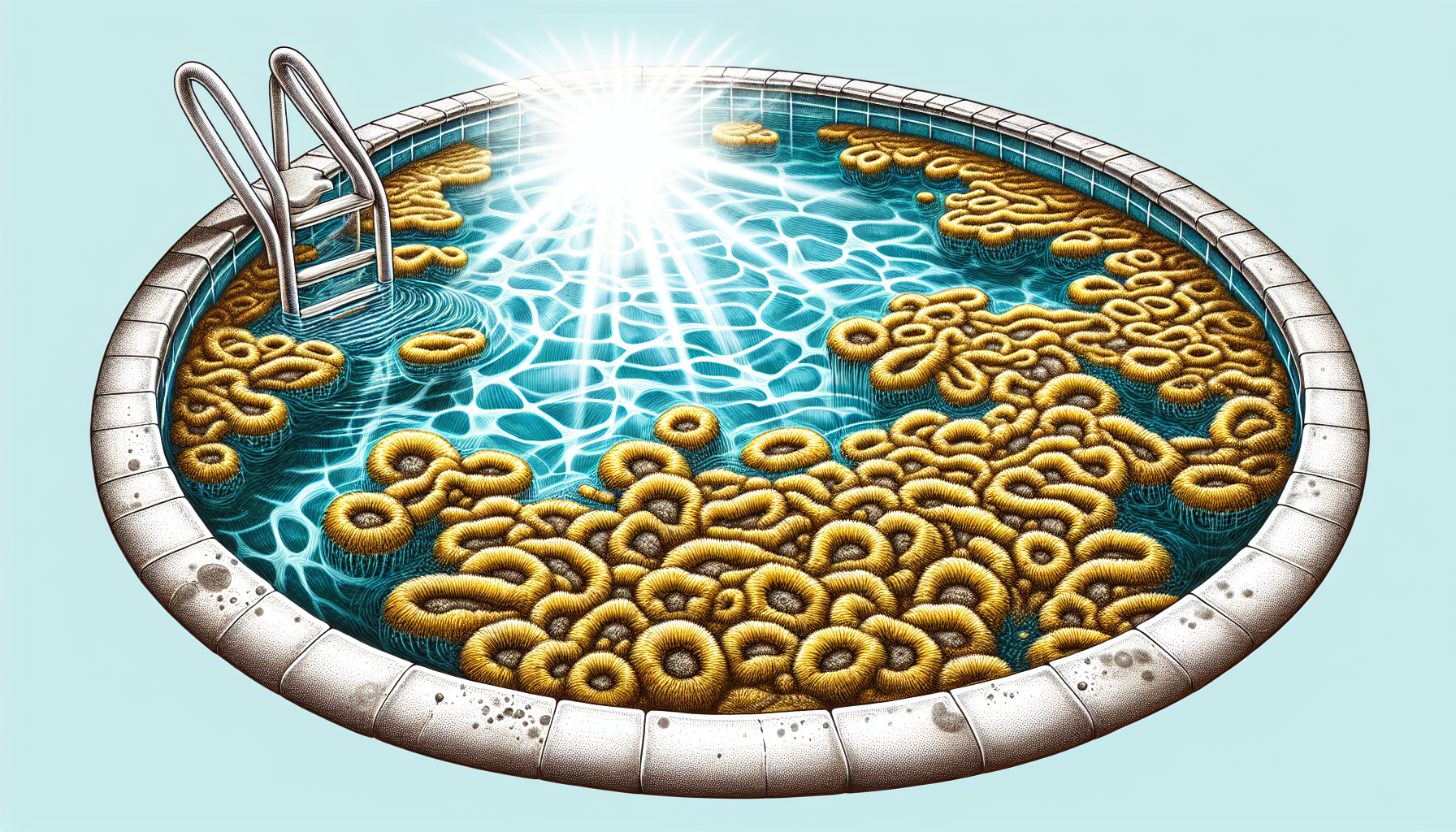
Also known as mustard algae, this insidious strain masquerades as sand or dirt, often going unnoticed until it’s too late. Its resistance to chlorine makes the yellow algae a formidable adversary, especially since it tends to favor the shady nooks and crannies of your pool.
Pink Algae

Don’t let the name fool you; pink algae is not algae at all but a type of bacteria. It spreads slowly, forming streaks and spots that cling to pool surfaces and accessories. While not as common, it’s still an unwelcome sight for any pool owner striving for pristine waters.
Causes of Algae Growth in Pools
Understanding the conditions that give rise to algae in pools is key to keeping the unwanted blooms at bay. Factors such as imbalanced chemicals, inadequate filtration, and poor circulation create the perfect storm for algae to thrive.
Throw in some contaminated pool toys or a gust of wind carrying spores, and you’ve got yourself an algae party that no pool owner wants to host.
Inadequate Filtration
A pool’s filtration system, including the pool filter, is its first line of defense, tirelessly removing debris and contaminants. When this system is not up to par, whether due to incorrect sizing or insufficient run times, algae seize the opportunity. Stagnant water becomes a breeding ground, and without proper filtration, algae spores circulate freely, ready to take hold wherever they land.
Low Chlorine Levels
Chlorine is the sworn enemy of algae, but when its levels fall, algae spores celebrate. Fluctuating chlorine levels, particularly in the sweltering heat of summer, can quickly lead to an algae infestation. The increased presence of carbon dioxide can also contribute to algae growth, making it essential to maintain proper chlorine levels.
Regular testing and proper maintenance can help maintain the necessary chlorine levels to prevent algae from gaining a foothold.
Poor Water Circulation
Water that doesn’t move becomes a playground for algae. Poor circulation creates dead zones where algae spores settle and multiply.
Ensuring your pool’s pump and circulation systems are in top working condition is crucial to disrupt these algae hotspots and keep your pool clean.
Imbalanced Pool Chemicals
A delicate balance of pH, alkalinity, and chlorine is essential for a healthy pool. When this balance is off, it’s not just the clarity of the water that suffers; it provides algae with an environment where they can thrive. Regular testing and adjustments are critical to maintaining this balance and making your pool an inhospitable place for algae.
Steps to Get Rid of Pool Algae
When faced with an algae invasion, a strategic plan of attack is your best weapon. Starting with a thorough cleaning to remove algae and progressing through shocking and chemical treatments designed to kill algae, each step is aimed at evicting these unwelcome guests.
With patience and persistence, you can restore your pool to its former glory.
Manual Vacuuming
The battle begins with manual vacuuming, a crucial tactic in removing visible algae and debris. This process prevents contaminated water from recirculating and sets the stage for the chemical treatments to follow.
Regular vacuuming is also a key preventive measure, keeping algae spores from ever feeling at home in your pool.
Brushing Pool Surfaces
Next, arm yourself with a stiff-bristled pool brush and scrub every inch of your pool’s surfaces. This physical effort is vital for breaking through the protective layers of algae and ensuring that subsequent chemical treatments can penetrate effectively. Daily brushing during an outbreak can significantly hasten the algae’s demise.
Shocking the Pool
Shocking the pool is like calling in the cavalry. A powerful dose of chlorine obliterates the algae, leaving nothing but clear water in its wake. Timing and consistency are key—shock treatments work best when performed at dusk or night and may need to be repeated to fully eradicate the algae.
Adding Algaecide
After the shock has done its work, an algaecide swoops in to clean up any remaining stragglers. This chemical agent is especially effective against early-stage algae growth and acts as a preventative measure to keep future invasions at bay.
Filtering and Backwashing
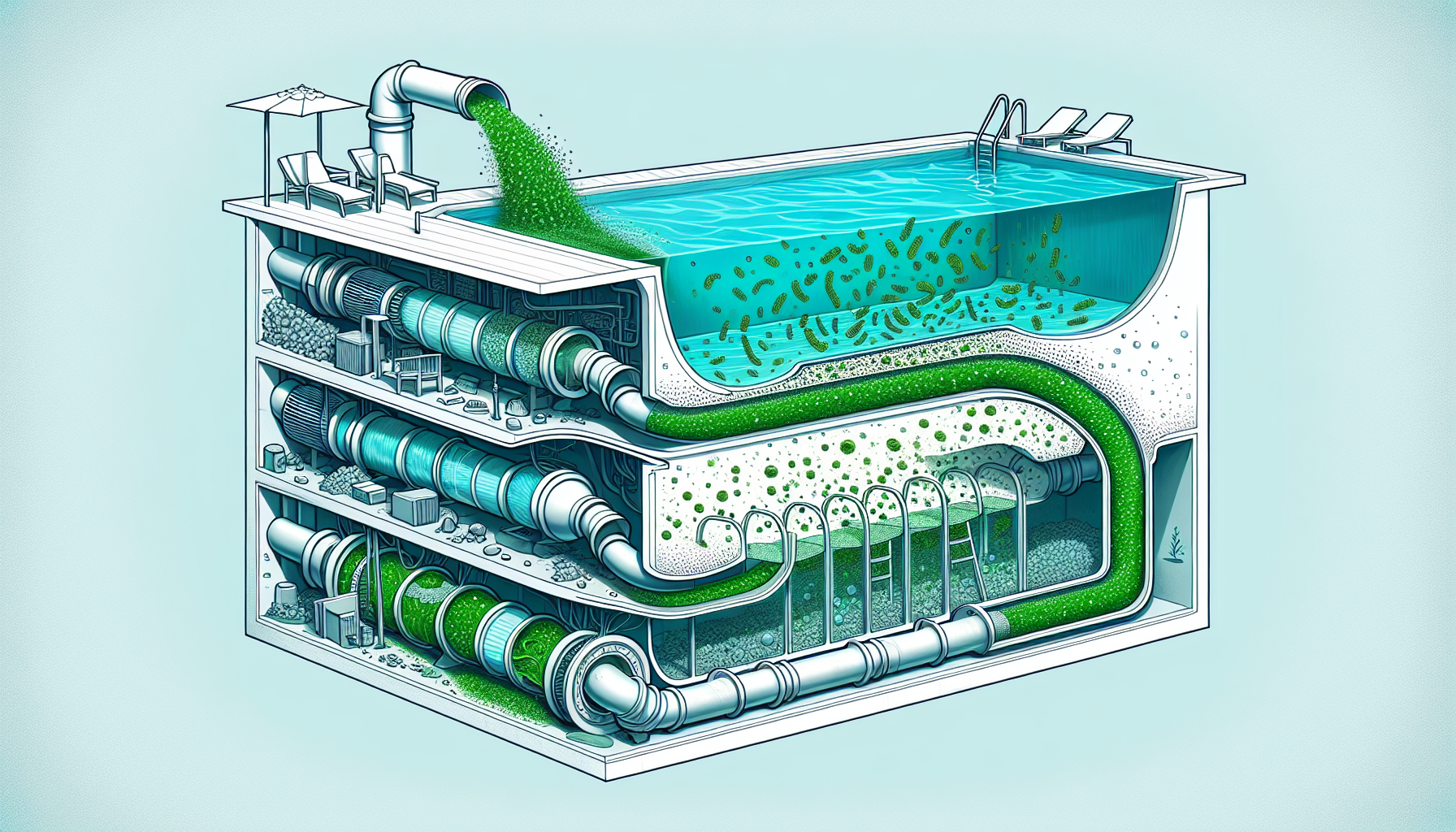
Finally, your pool’s filter system takes the stage, removing the debris and dead algae left in the aftermath of your cleaning efforts. Regular backwashing ensures that your filter remains effective, keeping your pool water pristine and free of any lingering algae particles.
Host your pool on Swimply
Preventing Algae in Your Pool
An ounce of prevention is worth a pound of cure, especially when it comes to pool algae. By maintaining a regular cleaning schedule, keeping chemical levels in check, and ensuring good water circulation, you can create an environment where algae are not welcome. With the right preventive measures, you can enjoy your pool without the constant worry of an algae takeover.
Regular Pool Maintenance
A consistent routine is the backbone of algae prevention. Vacuuming, brushing, and skimming not only keep your pool looking its best but also remove the organic matter that algae feed on. Regular maintenance is the steady drumbeat that keeps algae at bay.
Maintaining Proper Chemical Levels
Just like a well-tuned orchestra, your pool’s chemical balance must be in harmony to prevent algae growth. Testing and adjusting chemical levels regularly can mean the difference between clear and contaminated waters.
With vigilance and routine checks, you can keep your pool’s chemistry finely balanced and algae-free.
Ensuring Good Water Circulation
Stagnant water is algae’s best friend. By running your pool’s circulation system regularly, you ensure that water is constantly moving, disrupting any potential algae breeding grounds.
Proper water turnover is essential for a healthy, algae-resistant pool.
Using a Pool Cover
A pool cover acts as a shield, protecting your pool from the elements and the debris that can bring algae spores. By using a cover, especially during periods of non-use, you can significantly reduce the amount of maintenance required to keep your pool algae-free.
Treating Different Types of Pool Algae
Each type of pool algae has its Achilles’ heel. By tailoring your treatment to the specific type of algae you’re facing, you can eliminate it more effectively. From increasing chlorine levels to applying specialized algaecides, there’s a solution for every type of algae infestation.
Treating Green Algae
Green algae may be the most common, but it’s also the easiest to treat. A combination of brushing, shocking, and algaecide application can quickly turn a green pool back to blue.
Persistence and thoroughness in these steps are key to ensuring that green algae is completely eradicated.
Treating Black Algae
Black algae require a more aggressive approach due to its stubborn nature. Vigorous brushing to break its protective layer, coupled with a heavy dose of shock and algaecide, can penetrate and destroy these tenacious spots.
Regular follow-up treatments may be necessary to keep black algae from returning.
Treating Yellow Algae
Yellow algae, with its chlorine resistance, demands a higher chlorine dosage and repeated shocks to be effectively treated. Despite being tougher to kill, the right approach can leave your pool clear of this mustard menace.
Treating Pink Algae
Treating pink algae involves the following steps:
- Increase chlorine levels in your pool.
- Apply pool shock to kill the algae.
- Use specialized algaecides to prevent future growth.
- Brush the pool surfaces to dislodge and remove the bacterial colonies.
Following these steps will help you effectively treat pink algae in your pool.
Using Specialty Chemicals
While regular pool maintenance and chemical treatments are your primary defense against algae, sometimes you need to bring in reinforcements. Specialty chemicals like phosphate removers and pool flocculants offer an extra layer of protection and treatment, targeting the food sources and structure of algae.
Phosphate Remover
Phosphate removers play a critical role in algae prevention. By eliminating phosphates—a primary food source for algae—they reduce the likelihood of algae blooms. Regular use can help maintain a pool environment that’s uninviting to algae growth.
Pool Flocculant
Pool flocculants are a boon when dealing with early-stage algae growth or murky water. By clumping algae particles together, they make it easier to vacuum out the offending algae, restoring water clarity and preventing an outbreak.
Importance of Pool Equipment Maintenance
Your pool equipment is the unsung hero in the fight against algae. Proper maintenance of pumps, filters, and skimmers can be the difference between a crystal-clear pool and an algae-infested swamp.
Regular care ensures that each piece of equipment performs its role effectively, keeping algae at bay.
Cleaning Pool Filters
Regularly cleaning your pool filters is fundamental to maintaining water clarity and algae prevention. A clean filter system means efficient removal of algae spores and other contaminants, ensuring they don’t get a chance to multiply and cloud your pool.
Inspecting Pool Pump
A functioning pool pump is essential for maintaining good water circulation and distribution of chemicals. Regular inspections and maintenance ensure that the pump is effectively moving water, preventing algae from finding a stagnant place to settle.
Maintaining Skimmers and Baskets
Keeping your skimmers and baskets clean is a simple yet effective way to prevent algae. By removing debris before it decomposes and releases nutrients into the water, you’re cutting off a potential food source for algae.
Summary
From the stealthy green invader to the tenacious black spots, pool algae can be a formidable foe. But with the right knowledge and tools, you can prevent, treat, and eradicate these unwelcome guests. Regular maintenance, vigilant chemical balancing, and proactive equipment care are your best strategies in maintaining a pool that’s always ready for a refreshing dip. Embrace the clarity of algae-free water and the peace of mind that comes with a well-maintained pool.
Frequently Asked Questions
How often should I shock my pool to prevent algae growth?
You should shock your pool weekly to maintain proper chlorine levels and prevent algae growth, especially during peak swimming season or after heavy use.
Can I still swim in a pool with algae?
No, it’s not advisable to swim in a pool with visible algae, as it can harbor harmful bacteria and affect water quality. It’s best to treat the algae first and ensure the pool is clean before swimming.
Do I need to drain my pool to get rid of algae?
No, you don’t need to drain your pool to remove algae. Proper chemical treatment, brushing, and filtration can effectively eliminate algae without the need for draining.
How do I know if my pool’s chemical levels are balanced?
You can know if your pool’s chemical levels are balanced by testing the water 1-2 times per week with a reliable test kit to monitor and maintain pH, alkalinity, and chlorine levels. This will help keep your pool water in good condition.
Is it necessary to use a pool cover to prevent algae?
Using a pool cover can greatly reduce the debris entering the pool and thus help prevent algae growth.
